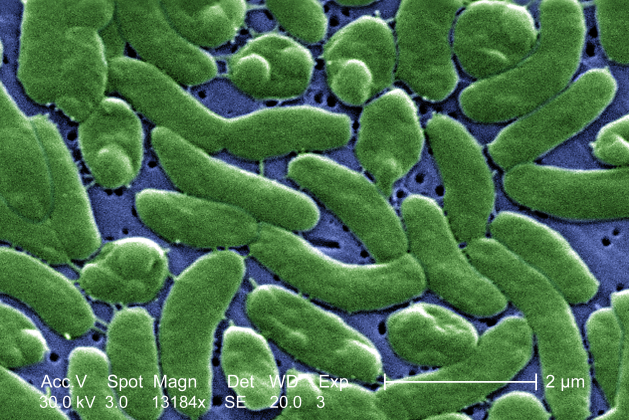Florida Health Officials Warn Public About Germ Lurking In Seawater And Raw Shellfish That Can 'Necrotize' Flesh

For Florida seagoing residents, it's vulnificus, not shark, season they should be worried about this summer, according to state health officials.
This past week, the Florida Health Department warned its citizens about the risks of coming across Vibrio vulnificus, a bacteria found in natural seawater environments that is related to the bacterium that causes cholera in poorer developing nations. The rod-shaped bacteria is already believed to have infected eight Florida residents, resulting in two deaths this year.
"People can get infected with Vibrio vulnificus when they eat raw shellfish," Florida Health Department spokeswoman Mara Burger said in a statement this past Wednesday, according to ABC News. "Since it is naturally found in warm marine waters, people with open wounds can [also] be exposed to Vibrio vulnificus through direct contact with seawater." Lacerations caused by handling fish like tilapia can provide an avenue for the germ to enter our bodies as well.
While not boasting the sheer destructive potential of its cousin, V. vulnificus has steadily grown in notoriety over the past few years, in part because of its ability to —under specific circumstances — disintegrate the flesh of its victims through a rapid necrotization of the skin and muscles surrounding the original wound where the infection began. Wound infections of V. vulnificus can be fatal for as many as 25 percent of its sufferers, and even for survivors the severe "flesh-eating" cases often require the amputation of the afflicted limb.
Less flashy but more dangerous cases of V. vulnificus infection occur when the bacteria reaches the bloodstream, causing septicemia, a worsening systemic inflammation that can leave the sufferer with severe chills, fever, nausea and eventual septic shock. More than 50 percent of these cases will end in death. However, these horror-movie scenarios typically only happen among those immunocompromised or with chronic liver disease; for most everyone else, V. vulnificus will result in vomiting, diarrhea and abdominal pain when ingested. Immediate antibiotic treatment, especially for severe cases, is recommended when V. vulnificus infection is suspected.
In the United States, human contact with V. vulnificus is generally and rarely isolated to select areas like the Gulf Coast region — Florida reported just 32 cases last year. Despite those low numbers, it does appear that humans are coming into more contact with the germ, possibly due to warming weather.
"While reasons for these increases have yet to be determined, it has been noted that outbreaks of V. vulnificus disease in Israel are associated with record high temperatures," a 2009 study in Infection and Immunity explained. "These data suggest that global climate change resulting in higher water temperatures may increase the frequency of V. vulnificus disease and influence the global distribution of this pathogen." In the United States, over 85 percent of V. vulnificus infections occur between May and October, according to the Centers for Disease Control and Prevention.
The Florida Health Department is maintaining a database of V. vulnificus cases as they come in and providing educational resources for its citizens. The site recommends these relatively simple tips, among others:
Do not eat raw oysters or other raw shellfish.
Cook shellfish (oysters, clams, mussels) thoroughly.
Avoid exposure of open wounds or broken skin to warm salt or brackish water, or to raw shellfish harvested from such waters.
Wear protective clothing (e.g., gloves) when handling raw shellfish.
Published by Medicaldaily.com



























